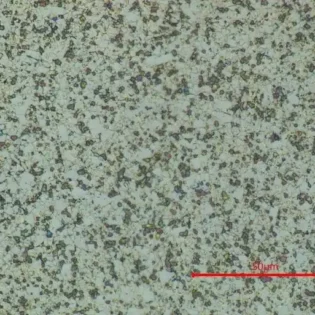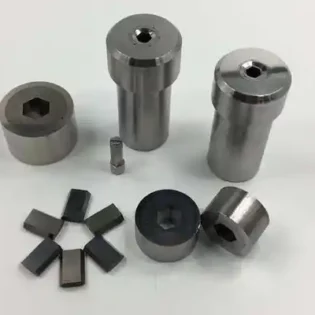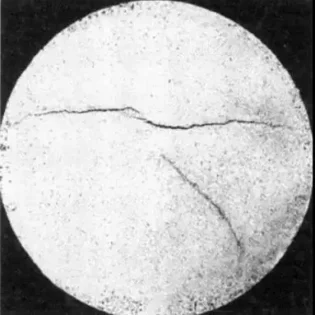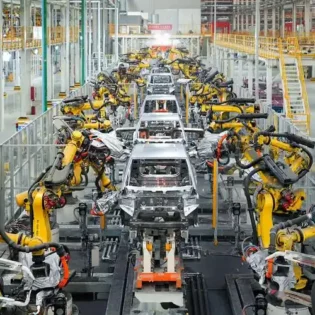Nowadays, the era of nano-manufacturing has come, the dawn of nanoscience has begun.With the deepening of nanotechnology research and the continuous application of nanotechnology, nanotechnology has become one of the most sought after disciplines. In the annual science and technology competitions of Science and Nature, the results of nanotechnology research are at the forefront. Many countries have plans to develop nanotechnology as a national strategy, and the development of nanotechnology is increasing year by year.However, the development of nanotechnology has undergone a long process from the natural presence of nanomaterials (such as living cells, bacteria, soot, etc.) to artificially manipulating atoms, molecules making nanomaterials, which are never consciously conscious To the theoretical breakthrough to the manufacturing process.The presence of nanomaterials in naturecell3.5 billion years ago, the first batch of living cells that are naturally occurring nano-substances. Cells are self-replicating aggregates of nanometer machines that contain a large number of nano-organisms such as proteins, DNA, RNA molecules. These nanoscale cells “organs” perform their duties. The construction of protein, the photosynthesis so that the rapid growth of bio-energy, so that the original surface of the earth covered with microorganisms, plants and other organic substances, it is the earth’s atmospheric CO? into O 2, completely changed the Earth’s surface and atmosphere. It can be seen that these nano-machine aggregates play a pivotal role in the evolution of nature.Natural inorganic nanoparticlesIn addition to the existence of a variety of complex internal nano-substances, the natural existence of natural inorganic nanoparticles. In ancient China, people use the collection of candles burning dust to create refined, this dust is nano-size carbon black; in the ancient bronze mirror surface has a thin layer of rust, after testing found that the rust layer is A film composed of nano-tin oxide. These natural inorganic nanomaterials provide natural material for people to carry out nanotechnology research.The early development of nanotechnologyEarly theoretical developmentIn 400 BC, Democritus and Leucippus put forward the atom, the atom theory for the development of nanotechnology provides a theoretical basis, that is, through a number of technical means from the bottom up to build new material possible. Scientists’ theoretical research on nanotechnology began in the 1860s, and Thomas Graham used gelatin to dissolve and disperse to prepare colloids, with colloidal particles having a diameter of 1 to 100 nm. Later scientists have done a lot of research on colloids, and established a colloid chemistry theory. In 1905, Albert Einstein calculated the sugar from the water in the experimental data to calculate a sugar molecule diameter of about 1nm, the first time on the human dimension has a perceptual knowledge. Until 1935, Max Knoll and N.Ruska developed an electron microscope to achieve sub-nanoscale imaging, providing an observational tool for people to explore the microscopic world.Early technology brewingDuring the Second World War, Professor Tian Liangyi of Nagoya University in Japan developed an infrared radiation absorber for the Japanese missile detector. Under the protection of inert gas, pure zinc black was prepared by vacuum evaporation method. The average particle size of zinc black was less than 10nm. But has not yet been applied to reality, the war is over. Later, the German scientists also prepared nano-metal particles in a similar way, when there is no concept of nanomaterials, put this material called ultra-fine particles (ultra-fine particles), which may be human purpose to manufacture nano-materials Really started.The origin of nanotechnologyFeynman predictedIn December 1959, Nobel laureate Richard Feynman delivered a speech at the American Institute of Physics at the California Institute of Technology at the conference entitled “There are plenty of room at the bottom”. He starts with a “bottom up” and proposes to start assembling from a single molecule or even atom to meet the design requirements. “At least in my opinion, the laws of physics do not rule out the possibility that an atom will produce an atom in an atomic way,” he predicted, “and when we control the fineness of the object, we will greatly expand our physical “Although the technology that really belongs to the” nanometer “category appeared only a few decades later, in this lecture, Feynman foresees the future of nanotechnology, which has defined the role of nanotechnology in the study of nanoscience Provides the earliest theoretical basis. In fact, many scientists in the nanometer scale after the research results to a large extent by the speech inspired by this speech.The birth of nanotechnologyNanotechnology was born in the early 1970s. 1968, Alfred Y. Cho and John. Archu and his colleagues used molecular beam epitaxy to deposit monolayer atoms on the surface. In 1969 Esaki and Tsu proposed a super lattices theory, which consisted of two or more different materials, Constitute. In 1971, Zhang Ligang and other applications using superlattice theory and molecular beam epitaxial growth technology, the preparation of different energy gap size of the semiconductor multilayer, and to achieve the quantum well and superlattice, observed a very rich physical effects. The quantum confinement effect in the quantum well has been studied extensively and deeply, and many new high-performance optoelectronics and microelectronic devices have been developed on this basis. In 1974, Norio Taniguchi invented the term “nanotechnology” to represent machineries with tolerances less than 1 μm, which made nanotechnology truly a stand-alone technique in the stage of history. But the complete picture of physics at the nanometer scale was far from clear.A major breakthrough in nanotechnologySymbol of nanometer revolutionIn 1981, Gerd Binnig and Heirich Rohrer developed the world’s first scanning tunneling microscope (STM) based on the tunneling effect in quantum mechanics, which observed the morphology and manipulation of solid surfaces by detecting the surface currents of solid atoms and electrons. The invention of STM is a revolution in the field of microscopy, and it is “a symbol of the nanometer revolution.” On the basis of STM, a series of scanning probe microscopes have been developed, such as atomic force microscopy (AFM), magnetic microscopy and laser microscopy. The emergence of STM enables mankind to observe in real time the state of individual atoms on the surface of the material and the physical and chemical properties associated with the surface electron behavior, Gerd Binnig and Heirich Rohrer thus won the 1986 Nobel Prize in Physics.Invented the scanning tunneling microscope (STM) scientist Gerd Binnig (left) with Heinrich Rohrer. Source: IBMThe first manipulation of a single atomIn 1989, Donald M. of the IBM Almaden Research Center The Eigler team, with the aid of STM, moved 35 Xe atoms adsorbed on the surface of the metal Ni (110) and formed the three letters of the IBM, which was the first time a human atom was manipulated, One of the big tech news. Scientists have seen the hope of designing and fabricating molecular-sized devices from this nanotechnology that manipulates single atoms.The rapid development of nanotechnologyIn July 1990, the first conference on nanoscience and technology was held in Baltimore, USA. The meeting formally put nanomaterial science as a new branch of materials science. As a starting point, nanotechnology has gained rapid development throughout the 1990s.In 1991, the Japanese scholar Sumio Iijima electron microscopy first discovered multi-walled carbon nanotubes, marking the advent of carbon nanotubes. Two years later Iijima and IBM company Donald Bethune made single-walled carbon nanotubes.In 1995, researchers used atomic layer epitaxy (ALE) technology to make the work of the quantum dot laser at 80K temperature, today a large number of quantum dot laser used in optical fiber communication, CD access, display and so on.In 1990, L. T. Canham discovered the phenomenon of porous silicon luminescence, which for the realization of photoelectric integration on the silicon has opened up a new prospect, to solve the device between the interconnection caused by the delay of the shortcomings, greatly enhance the performance of integrated circuits and computer speed.In 1997, the nanostructure laboratory of the Department of Electrical Engineering of the University of Minnesota was successfully developed using nano-lithography. The disk size was 100nm × 100nm. It was composed of a diameter of 100nm and a length of 40nm. Arranged in a quantum rod array with a storage density of 41011 bits per inch.Nanotechnology is fully developedInto the 21st century, the development and application of nanotechnology flourishing, the world will develop nanotechnology as a national strategy.In 2000, Clinton, the then president of the United States, announced the launch of the National Nanotechnology Initiative (NNI), a significant increase in research funding for nanotechnology, a significant increase in visibility, and a wave of global research on nanotechnology.Japan’s Ministry of Education, Culture, Sports, Science and Technology will allocate 30.1 billion yen (US $ 234 million) in the 2002 budget to implement the “Nanotechnology Integrated Support Program”.In Europe, funding for research and investment in nanotechnology is provided by national programs, European cooperation networks and major companies. At the same time the EU’s research program is the largest, research institutions set up the most, covering a wide range of areas.From the mid-1980s onwards, the Chinese government attaches great importance to the development of nanotechnology.
Quelle: Meeyou Carbide








